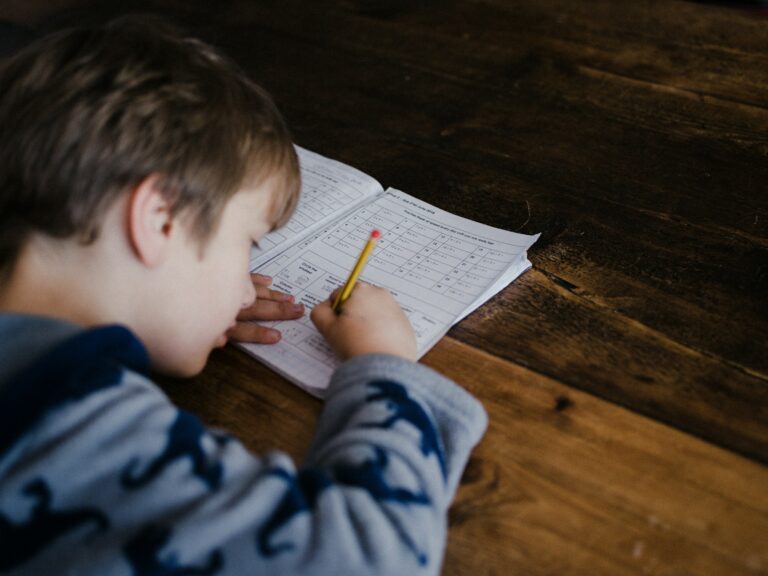Asthma in children over 3 years old—such a common phrase, yet, for so many parents, shrouded in uncertainty and worry. How to truly recognise a passing cough versus a sign of airway inflammation? When a child gasps for breath on a playground, what is happening within those sensitive, branching airways? Just as every family’s rhythm is unique, the journey with asthma can feel unpredictable—a sudden night-time cough, a tight chest after running, or the fear of a hospital trip if wheezing escalates. If your mind is brimming with questions—about causes, symptoms, treatment, or long-term everyday management—then this is exactly the place to pause, breathe, and gather the scientifically-backed answers that can make life smoother for both you and your child. You’ll find clear explanations, prevention tips to implement at home, detailed coverage of recent advances, and reassurance that you’re not expected to hold all the solutions on your own. Let’s unfold the many layers of asthma in children over 3 years old and discover how attentive care today can nurture healthy breaths tomorrow.
Understanding Asthma in Children Over 3 Years Old
Ever wondered what really happens inside a child’s chest during an asthma attack? In simple terms, asthma in children over 3 years old is a chronic inflammatory condition—meaning the airways are persistently irritated, often becoming narrower and extra-sensitive to triggers ranging from dust and pollen to emotional outbursts. The result? Those classic symptoms: wheezing (that high-pitched whistle as your child exhales), stubborn dry cough, occasionally tightness in the chest, and noticeable breathlessness—sometimes just after running, other times seemingly out of nowhere. This is not a fleeting virus, but a pattern—the body’s immune response readjusted, making it harder for air to flow in and out. Key point: between episodes, breathing might seem perfectly normal, which often confuses parents.
Why shine a spotlight on the over-3 age group? Diagnosing asthma in children over 3 years old is much more reliable than in toddlers. Three-year-olds and above are more capable of engaging in detailed history-taking and, from around age five, using a spirometer for objective lung function testing (blow into a tube, see how fast and how much air comes out). Boys, urban kids, children exposed to tobacco smoke—science shows particular patterns of risk in these groups. As medical understanding deepens, early and accurate management in this window is not just about symptom relief but about long-term lung health, helping kids thrive today and tomorrow.
Types and Triggers: More Than Just a Cough
The label “asthma” barely hints at how varied the condition can be. Your child may experience:
- Allergic or Seasonal Asthma: Symptoms flare with pollen, dust, or pet hair; pollution or passive smoke add fuel to the fire, especially during certain times of year.
- Exercise-Induced Asthma: A child with gleaming enthusiasm on the football field may suddenly slow down, coughing or needing a break not long after activity ends.
- Nocturnal or Emotional Asthma: Mysterious nighttime coughs, even without infection, or symptoms brought on by excitement, stress, or laughter (spasmodic coughs).
Underlying all of this are both genetic and environmental pieces. A family history of asthma, eczema, or allergies may set the scene (a concept called “atopy”). But exposure—secondhand smoke, air pollution, indoor allergens (think: dust mites, mould, pet dander), viral infections, cold air, or even obesity—plays a starring role in whether and when symptoms emerge or worsen.
Recognising Asthma Symptoms in Children Over 3
What signs should raise your antenna? Not every wheeze is asthma, but recurrent patterns matter:
- Rapid or difficult breathing, especially with out-breath.
- Sensation of chest tightness, sometimes verging on anxiety or panic.
- Persistent or spasmodic dry cough, especially at night or after playing, not explained by a cold.
- Audible wheezing, that “whistle” sound as air fights through narrowed passages.
- Interruption of normal play, running, or sleep by breathlessness.
Trying to differentiate asthma from a stubborn cold? Asthma symptoms come and go with recognisable triggers and don’t vanish for good like most childhood infections. A strong family pattern, recurrence, and noticeable improvement after using asthma medicines provide important clues.
But certain signs are red flags, signalling a need for rapid medical help: severe difficulty breathing, blue lips or nails, nostrils flaring with each breath in, use of stomach muscles to help breathing, inability to speak, lethargy, or confusion. Never wait—prompt action here can be lifesaving.
Diagnosing Asthma in Children Over 3 Years Old
Diagnosis is detective work: history, observation, and sometimes tests. A detailed symptom diary—jotting down times, activities, triggers, and episode patterns—can reveal much. Medical professionals may also focus on family allergy history, the presence of eczema or reflux, and response to medicines like short-acting beta agonists (quick-relief inhalers).
From age six, lung function exams such as spirometry often clarify the diagnosis—your child breathes into a device measuring airflow and capacity. Allergy testing (blood or skin) identifies specific triggers—knowing these gives a powerful tool for prevention. If symptoms resist all the usual strategies, or diagnosis remains a puzzle, referral to a paediatric asthma specialist brings deeper investigation and advanced options like immunotherapy or biologics.
Classification and Severity: Not All Asthma is Equal
Understanding the “type” of asthma helps medical teams tailor treatment confidently:
- Intermittent: Symptoms 2 or fewer days/week, night-time issues under twice/month, normal life between episodes.
- Mild Persistent: More than 2 days/week but not every day, increased night symptoms, minor lifestyle impact.
- Moderate Persistent: Daily symptoms, night issues at least weekly, restrictions on play and lower lung function.
- Severe Persistent: Persistent daily symptoms, frequent nights with cough/wheeze, major activity limitations, risk of hospitalisation.
Asthma in children over 3 years old most often falls somewhere on this spectrum—and key to progress is recognising where your child stands, then adjusting treatment as needed.
Asthma Attacks and Exacerbations: Knowing When It’s Serious
A typical asthma attack—child starts wheezing, looks anxious, maybe coughs, and quickly perks up after using their inhaler. But sometimes, an “exacerbation” looms—symptoms that outstay their welcome, refusing to settle even after repeated doses of reliever medicine. Causes? Pausing preventive steroid inhalers, respiratory viruses, allergens, or tobacco smoke. Unchecked, this can snowball into severe acute asthma (airway blockage, poor oxygen flow)—a situation needing urgent hospital care.
Treatment & Daily Management: Personalising Asthma Action Plans
The best relief comes from a three-pronged approach: the right medication, the right administration, and empowering families with structured, flexible plans.
- Asthma Action Plans: Written, colour-coded, and tailor-made by your medical provider. Which inhalers to use, when, in what dose—and what signals an escalation. Think of it as a map for families, school staff, and caregivers, keeping responses clear and timely.
- Reliever Medications: Short-acting beta agonists (like salbutamol/albuterol), available for immediate symptom relief, should always be within reach.
- Preventers: Inhaled corticosteroids for daily control of airway inflammation—a cornerstone of long-term safety. For some kids, add-ons like montelukast (a leukotriene receptor antagonist) or a combination inhaler may be recommended.
- Administration Techniques: Inhalers with spacers and masks or mouthpieces suit younger children; as coordination improves (age four and up), masks may be phased out. Correct technique is everything—a nurse or pharmacist can boost confidence here.
- Non-Medication Strategies: Identify and skirt triggers; keep a daily diary of symptoms; teach even six-year-olds to use a peak flow meter and recognise early warning signs; share information with all caregivers and teachers.
Sticking to routines, creating reminders (even a favourite song for inhaler time), and simplifying the regimen can truly make a difference in long-term control.
Preventive Strategies for Home and Environment
Little things, consistently done, reduce the risk of asthma in children over 3 years old flaring up unexpectedly:
- Air the home daily—even if chilly; on high-pollen days, pick early mornings or late nights.
- Keep indoor temperature comfortable but not overheated (below 20°C/68°F).
- Prevent mould: ventilate bathrooms and kitchens, dry wet areas quickly, check for damp spots.
- Regular pet hygiene and keeping animals out of bedrooms help cut triggers.
- Fight dust mites: frequent cleaning with a damp cloth, avoid heavy curtains and plush toys, use hot washes for bedding.
- Refrain from drying laundry in bedrooms; during pollen season, skip outdoor clothes drying.
- After outdoor play in high pollen, wash long hair and shake out dusty clothes before coming inside.
- Keep all indoor spaces completely smoke-free.
- Use air purifiers if they’re available.
- Track daily air quality and limit outdoor activities on high-pollution or high-pollen days.
- Encourage a healthy, balanced diet and regular physical activity that feels safe for your child.
- Prioritise restful sleep and a calm bedtime schedule.
Even small adjustments, consistently applied, support a more predictable asthma journey.
School, Sports and Social Life
For many families, big concerns revolve around schooling and sports: “Will my child miss out?” Most children, with their asthma in children over 3 years old well-managed, should play, study, and explore without restriction. What helps? Sharing the asthma action plan with teachers, keeping quick-relief medicine close at hand, encouraging open communication around triggers or symptoms, and reassuring your child that they can speak up when needed. If worries persist, ask for a care review—sometimes adjusting medication or timing inhalers makes all the difference on the playground or sports field.
Emotional Wellbeing: Beyond the Lungs
Asthma in children over 3 years old isn’t only about airways. It’s sometimes about anxiety—yours, your child’s, or even siblings’. Honest conversations, age-appropriate explanations, and practical problem-solving can soften emotional stress. Teach coping techniques—slow breathing, relaxation routines, even creative storytelling about symptoms or treatments. In some cases, extra support or counselling makes the journey less isolating, helping develop resilience and fostering self-confidence.
Long-Term Outlook and Complications
The big picture for asthma in children over 3 years old? With attentive care, most children thrive, living active, engaged lives. Yet, poorly-controlled asthma brings real risks: hospital admissions, sleep disturbances, missed school, slowed growth, and, if unchecked, permanent airway changes. On the flip side, some children “outgrow” their asthma—especially those with mild, infection-driven forms—while others with persistent allergies or ongoing exposure to triggers may face symptoms for longer. The key lies in regular follow-up, evolving independence in self-management, and periodic action-plan updates as children grow and change.
Scientific Advances and the Future of Asthma Care
The landscape for asthma in children over 3 years old keeps evolving, led by research and innovation. Biologic therapies now offer options for severe or treatment-resistant cases—these medicines target specific immune pathways, reducing the burden for children who struggle on conventional therapies. Smart inhalers, digital tools, and remote-monitoring apps help families track symptoms, remember medicines, and even connect data directly to their medical team. Public health initiatives target better air quality, support maternal nutrition, promote breastfeeding, and push for cleaner indoor environments—all empowering families long before symptoms ever surface.
Myths and Facts: Debunking Common Beliefs
- Most children don’t “outgrow” asthma in children over 3 years old entirely—yet careful management minimises impact.
- Inhaled corticosteroids are safe when prescribed and used according to the action plan—benefits far exceed risks.
- Full participation in sports is not only possible but encouraged when symptoms are well-controlled.
- Asthma itself isn’t contagious, but infections can trigger attacks.
- Ongoing monitoring and medication matter even during symptom-free stretches.
- Wheezing isn’t the only warning sign: unexplained cough or chest tightness warrant attention, too.
- Avoiding triggers helps control symptoms, but medication addresses the underlying inflammation.
When Is Urgent Help Needed?
Certain signs require immediate response for any child with asthma in children over 3 years old:
- Gasping for air or severe difficulty breathing.
- Blue lips or fingernails.
- Inability to talk or finish sentences.
- Sudden confusion, unusual silence, drowsiness.
- No noticeable improvement after reliever medicines.
Don’t wait. Follow your child’s asthma action plan, and if in doubt, seek emergency services promptly.
Key Takeaways
- Asthma in children over 3 years old is among the most frequent chronic health conditions, yet—armed with a clear asthma action plan, scientific knowledge, and medical support—most children can live active, connected lives, free from unnecessary restrictions.
- Early recognition of symptoms, consistent avoidance of triggers, and attention to medication technique can transform daily experiences.
- Collaboration with medical professionals, teachers, and caregivers sustains both safety and development.
- Family wellbeing matters—emotional support and open dialogue build confidence for parent and child alike.
- For those wishing to go further—personalised guidance, symptom tracking, and preventive strategies can be found on application Heloa, offering free health questionnaires and trusted, up-to-date advice tailored to your child’s needs.
Questions Parents Ask
Can sudden weather changes trigger asthma symptoms in children over 3 years old?
Weather swings can indeed play spoilsport. Sudden drops in temperature or spikes in humidity may trigger airway sensitivity, setting off symptoms for many kids with asthma in children over 3 years old. Cold air can make airways spasm, and extra moisture may increase pollen or promote mould growth. If you notice flares with weather changes, jot down patterns and share these observations with your doctor—together, you can adjust the management plan to smoothen those tricky transitions.
Is it possible for my child to participate in physical activities with asthma?
Most definitely. With asthma in children over 3 years old managed appropriately, children can join in sports, games, and school activities just like their friends. In fact, regular physical activity can strengthen lung capacity and self-esteem. Inform teachers or coaches about your child’s triggers and ensure that reliever medicine is always nearby. If play seems hard, discuss with the doctor about pre-activity inhaler use or medication tweaks—sometimes, that tiny shift makes a world of difference.
What are some ways to help my child take their inhaler correctly?
Teaching young children proper inhaler technique is an art! Using a spacer with the inhaler is the gold standard for ensuring medication gets into the lungs—much easier for small hands and developing coordination. Make inhaler time part of a soothing routine, perhaps a fun song or reward helps. Don’t worry if your child feels resistant initially; gentle encouragement and repeated practice, ideally under the watchful eye of a nurse or pharmacist, builds confidence and skill over time. Celebrate progress and remember—even small steps are valuable when building lifelong habits.
Further reading:









